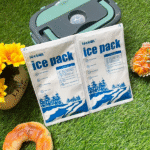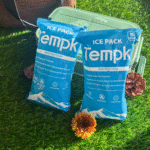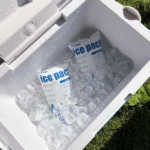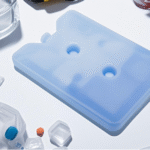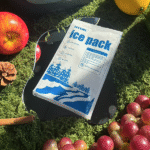Como o mundo ultrapassa 18 Bilhões de doses de vacinas covid-19 transportadas e mercados de comércio eletrônico de alimentos frescos excedem $500 bilhão, embalagem da cadeia de frio emergiu como uma pedra angular da civilização moderna. Esta tecnologia multidisciplinar - Integração de Ciência dos Materiais, termodinâmica, e monitoramento digital-é redefinindo os fundamentos da logística global para bens sensíveis à temperatura.
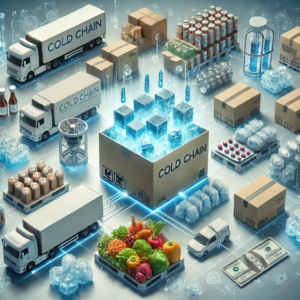
1. A ciência da defesa térmica
A embalagem da cadeia de frio transcende o isolamento tradicional criando barreiras térmicas dinâmicas. Os sistemas modernos combinam materiais de mudança de fase (PCMs) com painéis isolados a vácuo (VIPs), alcançar precisão inédito nos métodos convencionais. Por exemplo, PCMs baseados em biodudação agora mantêm temperaturas entre -70° C a +25 ° C. com ± 0,5 ° C precisão, Crítico para vacinas de mRNA como os tiros covid-19 da Pfizer-Biontech. Tais inovações reduziram as taxas de perda de eficácia da vacina de 15% para 0.03%, Garantir a integridade de entrega quase perfeita.
2. Inovações de ponta remodelando a indústria
UM. Sistemas de monitoramento inteligentes
Soluções de cadeia fria de quarta geração incorporam microsensores habilitados para IoT, como unidades de monitoramento de temperatura contínua (Ctmus), que transmitem dados em tempo real em 0.1° C Resolução. Pfizer's TrackVax sistema reduziu a deterioração da vacina de 5% para 0.4% em 2021, economizando milhões de doses.
B. Avanços de materiais sustentáveis
A espuma de EPS tradicional está sendo substituída por Ácido polilático bioengenhado (PLA), cortando pegadas de carbono por 67% ao aumentar a força de compressão por 40%. Programa piloto de Moderna usando embalagens baseadas em micélio-muitas vezes biodegradável dentro 30 dias após o transportador-mostra a mudança para as economias circulares.
C. Regulação ativa da temperatura
Refrigeradores de Stirling miniaturizados, desenvolvido por darpa e agora comercializado, Ativar ajustes de temperatura sob demanda. Esses dispositivos do tamanho de moedas usam materiais semicondutores para estabilizar ambientes de carga, Mesmo em climas extremos.
3. Impactos específicos do setor
- Produtos farmacêuticos: Ultra-baixa-temperatura (-70°C) Envio para terapias de mRNA agora alcança 99.97% confiabilidade, acima de 85% com sistemas legados.
- Cadeias de suprimento de alimentos: As cadeias frias integradas em blockchain reduziram o desperdício global de alimentos por 12% em 2022, Como visto nas implantações de contêineres inteligentes da Maersk.
- Biologics: Soluções criogênicas usando a tecnologia de fase de vapor de nitrogênio líquido estendem a viabilidade de remessas de células -tronco para 14 dias, um 300% melhoria.
4. Superando os desafios globais
UM. Logística preditiva inteligente
Os algoritmos AI agora prevêem as interrupções da cadeia de suprimentos com 92% precisão, Remopeamento de remessas proativamente. UPS Premier Blue Serviço aproveita o aprendizado de máquina para cortar excursões de temperatura por 63%.
B. Inovações neutras em carbono
Empresas como as tecnologias de cadeia fria estão adotando painéis PCM reutilizáveis, eliminando 80% de resíduos de embalagem de uso único. Enquanto isso, As unidades de refrigeração movidas a energia solar estão cortando a dependência de diesel em mercados emergentes.
C. Conformidade Regulatória
Com 37 países apertando os regulamentos da cadeia de frio desde 2020, ISO 23412:2022-A embalagem certificada garante a conformidade nas fronteiras, evitando $2.8 bilhões em multas anuais para gigantes farmacêuticos.
5. A estrada à frente
Por 2030, O mercado de embalagens de cadeia de frio é projetada para alcançar $48 bilhão, impulsionado por terapias genéticas que exigem -150° C Armazenamento e entrega de última milha baseada em drones. Inovações como aerogéis de autocura e tags de temperatura do ponto quântico prometem revolucionar ainda mais o campo.
Conclusão
A embalagem da cadeia de frio não é mais apenas uma ferramenta logística - é um ativo estratégico que protege a saúde e o comércio global. Como as mudanças climáticas e as cadeias de suprimentos de teste de pandemias, investimentos em inteligente, sistemas sustentáveis determinarão quais indústrias prosperam. De laboratório ao consumidor, A evolução da cadeia fria está escrevendo um novo capítulo na busca da humanidade para dominar o tempo e a temperatura.

















